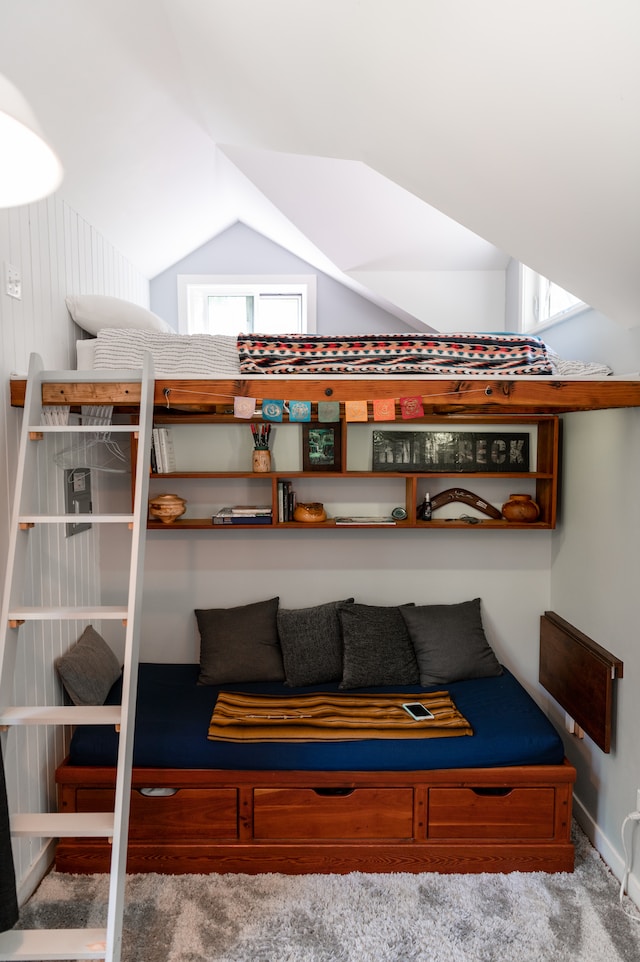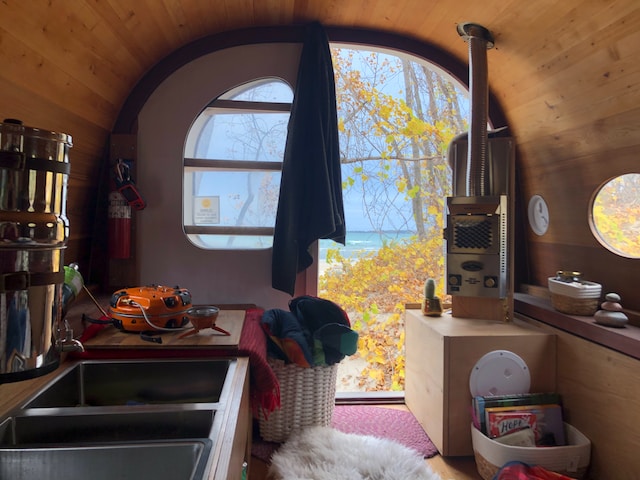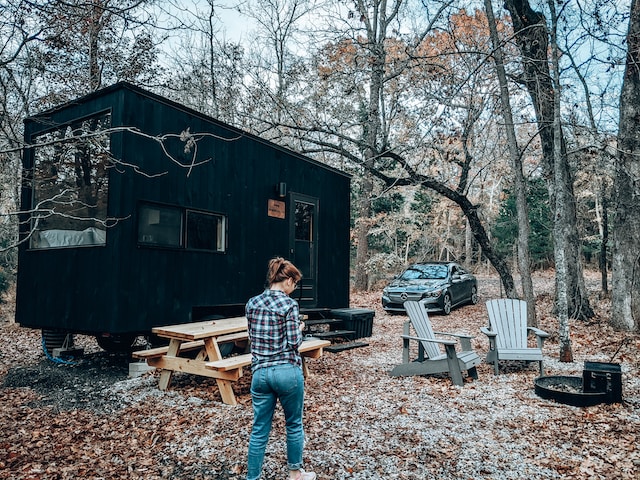
In the realm of alternative living arrangements, none are as intriguing and captivating as the world of tiny homes. The allure of minimalistic living, coupled with the promise of a smaller ecological footprint, has enticed a growing number of individuals to embrace this unconventional lifestyle. Yet, behind the facade of charm and efficiency, there are challenges of tiny living that those who dare to dwell within these limited spaces must confront. In this article, we delve into the complexities and hardships of tiny living, shedding light on the disciplines and creative endeavors required to navigate this diminutive world.
Space Constraints
One of the many unique challenges of tiny living is space constraints. With limited square footage at their disposal, tiny homeowners must find innovative ways to maximize every inch of their living space.
Multi-Functional Furniture
When every square inch matters, furniture that can serve multiple purposes becomes the backbone of a well-designed tiny home. Think of beds with hidden storage compartments, dining tables that fold against the wall to become a desk, or sofas that transform into guest beds. The possibilities are endless, as the need for furniture adaptability fuels a thriving market of multifunctional marvels.
Vertical Thinking
In tiny abodes where horizontal space is at a premium, the vertical realm becomes an invaluable asset. From floor-to-ceiling shelving units and suspended storage baskets to lofted sleeping areas and mezzanine levels, utilizing verticality allows tiny homeowners to make the most of every foot of their living space. Harnessing the power of height creates an illusion of expansiveness, giving the impression of a larger home.
Clever Storage Solutions
Storage dilemmas in tiny homes require imaginative problem-solving. Embracing the idea that every nook and cranny counts, tiny dwellers become pioneers in finding inventive storage solutions. Under-stair compartments, secret cubbyholes, built-in shelves within walls, and creative use of reclaimed materials like hanging shoe organizers or repurposed crates are just a few examples of the resourcefulness that arises from living in a small space.

Compact Appliances
Tiny living often necessitates downsizing not only one’s physical possessions but also the appliances that make a house a home. Compact and efficient appliances, such as mini fridges, washer-dryer combos, and slimline ovens, become a staple in these diminutive abodes, taking up less space while still providing the essential functionality required for daily living.
Expanding Living Spaces Beyond Walls
While the interior of a tiny home may be limited, the world outside becomes an extension of living space. Thoughtful outdoor design can provide additional areas for relaxation, dining, and even gardening. Rooftop gardens, patio seating, and fold-out decks are among the many ways tiny homeowners cleverly merge their interiors with nature, blurring the boundaries and creating a sense of spaciousness.
Simplifying and Decluttering
In the realm of tiny living, simplicity reigns supreme. With limited space, it becomes paramount for homeowners to streamline their possessions and embrace the liberating power of minimalism.
Embracing the KonMari Method
Inspired by Marie Kondo’s revolutionary approach to tidying, tiny homeowners often turn to the KonMari Method as a guide in their quest for simplicity. This method encourages individuals to evaluate their belongings based on whether they spark joy in their lives. By focusing on the emotional connection with their possessions, tiny dwellers learn to make deliberate choices, keeping only the items that truly enrich their lives.
Downsize with Purpose
In a world where excess is often the norm, downsizing becomes not only a necessity but also a conscious decision to prioritize what truly matters. Tiny homeowners carefully evaluate their belongings, considering their usefulness, value, and personal attachment. By letting go of unnecessary items, they create space to live with intention, surrounded only by the things that bring them joy and serve a purpose.
Storage Solutions for Simplicity
Successful decluttering goes hand in hand with efficient storage solutions. Tiny dwellers become masters of organization, utilizing every nook and cranny to maximize their available space. From utilizing vertical wall space with hanging organizers to incorporating hidden storage compartments in furniture, these individuals find innovative ways to keep their possessions organized and easily accessible.
Mindful Consumption
In the pursuit of simplicity, tiny homeowners adopt a mindful approach to consumption. They prioritize quality over quantity, gravitating towards items that are well-made, durable, and serve multiple purposes. By reframing their relationship with possessions, these individuals focus on meaningful experiences rather than accumulating material goods.
Cultivating a Minimalist Mindset
Simplifying and decluttering is not merely an act of physical organization; it requires a shift in mindset. Tiny homeowners learn to detach themselves from the societal notion that acquiring more equates to happiness. They embrace minimalism as a philosophy, finding contentment in the freedom that comes with having less and the ability to focus on what truly matters in life.
Environmental Considerations
While tiny living offers the potential for a smaller ecological footprint, it also presents unique challenges when it comes to sustainability and environmental considerations.
Energy Efficiency
Tiny homes may have limited space for traditional energy systems, but that doesn’t mean they can’t be energy efficient. Many tiny homeowners opt for solar panels to power their homes, harnessing the abundant energy from the sun to meet their electricity needs.
LED lighting, energy-efficient appliances, and insulation are also key considerations in tiny home design. By incorporating these features into their space, tiny dwellers can reduce their energy consumption and lower their carbon footprint.

Sustainable Materials
When designing and building their tiny homes, environmentally-conscious homeowners prioritize the use of sustainable materials. This includes utilizing reclaimed wood, recycled building materials, and eco-friendly insulation options.
Tiny homeowners may opt for non-toxic paints and finishes, ensuring that their living space is free from harmful chemicals that can negatively impact both their health and the environment.
Water Conservation
In tiny homes, space constraints often mean smaller water tanks and limited water usage. To mitigate this challenge, tiny homeowners embrace water conservation practices such as low-flow fixtures, rainwater harvesting systems, and composting toilets.
Greywater systems, which treat and reuse wastewater from sinks and showers, are also popular among tiny dwellers, reducing water wastage and minimizing their environmental impact.
Sustainable Landscaping
While tiny homes themselves may have a small footprint, many tiny homeowners extend their sustainable practices to their outdoor spaces. Native plants, drought-resistant landscaping, and vertical gardens are commonly employed to create aesthetically pleasing and eco-friendly surroundings.
Rainwater collection systems can also be utilized to water outdoor vegetation, reducing reliance on municipal water sources and conserving this precious resource.
Minimal Waste
Living in a tiny home naturally encourages a minimalist lifestyle, including a focus on reducing waste. Tiny dwellers prioritize buying in bulk to minimize packaging waste, compost organic materials, and practice recycling diligently.
Embracing a zero-waste mindset, some tiny homeowners even challenge themselves to produce as little waste as possible, exploring creative ways to repurpose and reuse items to extend their lifespan.
Financial Challenges of Tiny Living
In addition to the unique spatial and environmental unique challenges of tiny living, there are also the financial hurdles. While the appeal of a smaller mortgage or decreased utility bills may seem enticing, tiny homeowners must carefully navigate the financial landscape to ensure long-term sustainability and security.
Initial Costs and Budgeting
The decision to embrace tiny living often involves a significant upfront investment. From the purchase or construction of the tiny home itself to the acquisition of land or securing a space in a tiny home community, homeowners must anticipate and plan for these initial costs. Budgeting becomes essential to avoid potential financial strain, and considering alternative financing options like personal loans or crowdfunding may be necessary for some individuals.

Downsizing Expenses
One of the primary appeals of tiny living is the potential for reduced living expenses. With limited space comes a natural inclination towards minimalism, prompting homeowners to reevaluate their spending habits and prioritize their needs over wants. This mentality can manifest in various ways, such as cutting unnecessary subscriptions, lowering utility bills through energy-efficient practices, and rethinking entertainment and leisure expenses.
Maintenance and Repairs
While tiny homes may require less maintenance and fewer repairs compared to traditional houses, homeowners must still account for these inevitable expenses. Establishing an emergency fund specifically for repairs or unexpected costs ensures that financial stability is maintained in the face of unforeseen circumstances. Building a relationship with local contractors and tradespeople who understand the challenges of tiny living can also be advantageous when seeking cost-effective solutions.
Insurance and Legal Considerations
Insuring a tiny home can present complex challenges due to its non-traditional nature. Tiny homeowners must carefully research and assess their options, seeking out insurers who understand the specific requirements and risks associated with tiny homes. Understanding and complying with local zoning and building codes is crucial to avoid potential legal complications that can arise from living in a tiny home.
Income Generation
For many, tiny living offers the opportunity for greater financial freedom and flexibility. With reduced living expenses, some homeowners are able to pursue careers or ventures that align with their passions rather than solely focusing on financial rewards. Others may explore alternative income streams, such as renting out their tiny home on platforms like Airbnb or starting a small business related to the tiny home movement. Embracing a creative and entrepreneurial spirit can provide financial stability and even turn tiny living into a sustainable source of income.
Long-Term Financial Planning
As with any living arrangement, thinking about one’s long-term financial goals becomes paramount. While tiny living can be an affordable lifestyle choice, homeowners must still consider retirement savings, healthcare costs, and other financial obligations that arise as part of a long-term financial plan. Consulting with financial advisors who understand the unique challenges and opportunities of tiny living can help navigate these complexities and ensure a secure financial future.
Zoning and Legal Issues
Navigating the complex world of zoning and legal regulations is one of the greatest challenges that tiny homeowners face. The unique nature of tiny homes often presents obstacles when it comes to finding suitable land or securing the necessary permits to legally reside in these compact dwellings.
Zoning laws, which determine how land can be used, can vary widely from one jurisdiction to another. Many zoning codes were designed with traditional single-family homes in mind, making it difficult for tiny homes to fit within these parameters. Tiny homeowners find themselves in a constant battle against outdated regulations that fail to account for the growing trend of alternative living arrangements.

Finding Land to Build On
One of the most significant hurdles is finding land that allows for the placement of a tiny home. In some areas, zoning laws require a minimum square footage for dwellings, making it challenging to find a plot that meets these requirements. Additionally, some municipalities prohibit or heavily restrict the placement of accessory dwellings, which can include tiny homes.
Challenges in Securing Permits
Securing the necessary permits to legally reside in a tiny home can also be a complex and time-consuming process. Building codes often have minimum size requirements that tiny homes don’t meet, making it necessary for homeowners to seek variances or exemptions. This can involve engaging with local government officials, attending hearings, and potentially facing opposition from neighbors or community members who may have concerns about the aesthetic or impact of tiny homes.
Know the rules and local laws
To navigate these zoning and legal issues, it is essential for tiny homeowners to educate themselves on local regulations and seek legal advice if necessary. Joining forces with other tiny homeowners and advocacy groups can also help amplify their voice and work towards changing zoning regulations to accommodate the needs of this growing community.
Advocating for Tiny Homes
By actively engaging with local officials, attending meetings, and advocating for tiny homes, homeowners can create awareness and foster a greater understanding of the benefits and possibilities that tiny living offers. Collaborating with like-minded individuals and organizations can lead to meaningful changes in zoning ordinances, making it easier for others to embrace the tiny home lifestyle.
The world of tiny living is a captivating and challenging one but it is a way to create a lifestyle that is both fulfilling and environmentally conscious. Tiny living may require discipline and creativity, but for those who dare to dwell within these diminutive abodes, the rewards are immeasurable. The challenges may be great, but the journey is inspiring, and the possibilities within the world of tiny living are endlessly rewarding.
